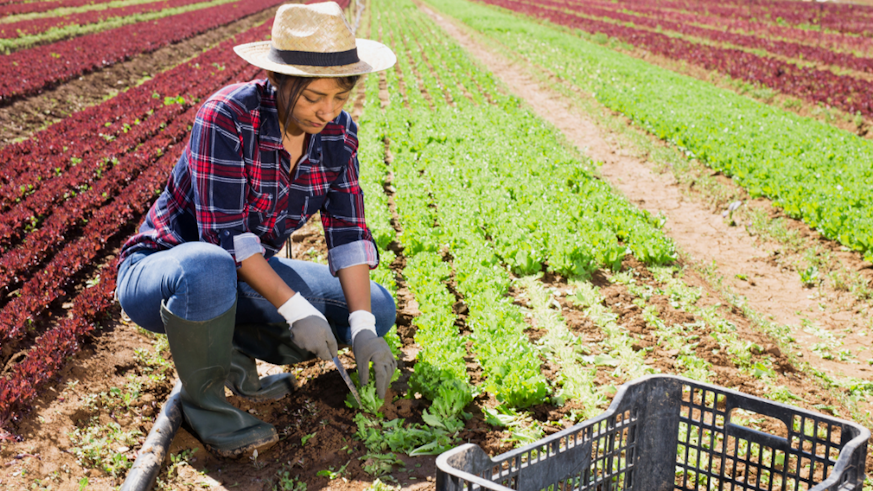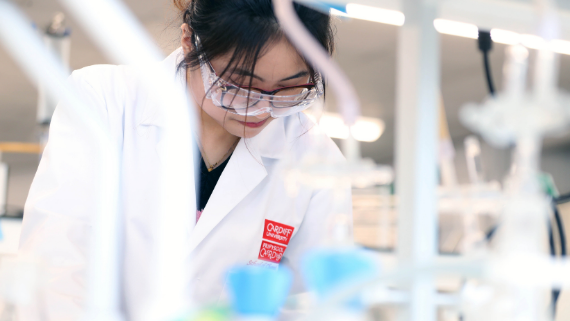Breakthrough in the fight to replace pesticides
27 Tachwedd 2020

Cardiff scientists, led by Professor Rudolf Allemann, have discovered new, sustainable ways to design and create the next generation of pest control agents, joining the ongoing global drive to replace pesticides.
Professor Allemann and his team, including Professor Pickett FRS, have used natural product-related chemistry to create alternative pest control agents, with improved sophistication and specificity.
Pesticides currently act as broad-spectrum toxicants, meaning that both the pests and friendly insects can be affected by the crop treatment. There is a growing commercial interest in using the pests own chemical communication pheromones and other natural chemical signalling agents (termed ‘semiochemicals’) to precisely target only the species causing harm. This can be seen in both the food production arena and in work to prevent human health problems involving insect vectors.
The team’s breakthrough has been in making molecular design more predictable, and using fermenter technologies to produce natural products that act as the semiochemicals, which would otherwise be very expensive to create.
Pest insects will often use their sense of smell to recognise the presence of such semiochemicals, as they detect and avoid unsuitable ecosystems. This sense of smell is extremely specific in detecting semiochemicals amongst a range of other chemicals present in the environment.
Consequently, the current approaches to designing pesticide alternatives are not successful when applied to these semiochemicals.
In this important breakthrough work, pesticide alternatives were created by testing the hypothesis that:
“if the enzymes biosynthesising semiochemicals accept new substrates then the products should be sufficiently similar, in terms of chemical space, to be similarly active”.
Using this idea with a semiochemical that is an aphid repellent derived from pest-damaged plants, new alternatives were created, which were then successfully found to repel a range of pests.
It was even found that as the structures relating to a natural substrate were modified further, the activity was actually reversed, resulting in a powerful aphid attractant, as opposed to a repellent.
The novel process identified by Allemann and his team has therefore found semiochemical tools able to perform a ‘push-pull’ crop protection system. That is, one semiochemical can repel (push) pests from the crop whilst another can attract (pull) the pests for destruction off the crop, for example for removing crop waste after harvest.
The team proceeded to demonstrate how such compounds can be produced on a large scale by employing fermentation technologies.
The novel approach is currently being scaled up for production for protection of high-value lettuce crops in Spain, via a commercial collaboration based in Cardiff, in the new year.
In the meantime, this approach is set to expand into research against major crop pests worldwide, including whitefly, and also sand flies which are vectors associated with human disease in South America, Asia and sub-Saharan Africa.
Funding was provided by a BBSRC Super Follow on Fund grant (BB/R019681/1) which introduced a new approach being developed in the School of using high yielding promiscuous kinase enzymes to make terpenoid substrates including (E,E)-farnesyl pyrophosphate and its analogues: Johnson, L. A. et al. 2020. Modular chemoenzymatic synthesis of terpenes and their analogues. Angewandte Chemie International Edition 59(22), pp. 8486-8490. (10.1002/anie.202001744).
Rhannu’r stori hon
Mae manylion llawn ar gyfer ein cyrsiau BSc a MChem, yn cynnwys sut i ymgeisio, ar gael yn ein chwiliwr cyrsiau.

